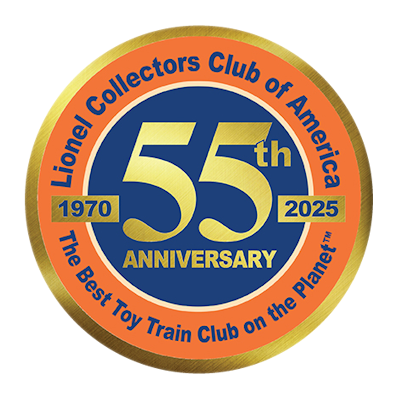Frequently Asked Questions
- ALL
- Train Values and Selling My Trains
- Unique and Valuable Lionel Trains
- Parts and Service for My Trains
- Operating My Trains
- Sizes of Lionel Trains
- Lionel Fastrack Layouts and Operation
- LCCA Fastrack Modules and Standards
- Lionel Customer Programs
- Software - Inventory, Track Planning etc
- Storage Conditions and Packaging of Trains
Operating My Trains
I’ve attached a scan of the instructions for the Lionel Type R transformer. I do have a word of caution however. The R transformer is a pre world war II version that was manufactured through 1947. I would be cautious using a transformer that is over 60 years old. Chances are better than even that your cord should be changed. For safe operation, I would recommend that you purchase a modern transformer. You can purchase a new Lionel transformer. The CW-80 would be a current model and offers 80 watts. The Type R that you have was rated differently back then and did not really deliver the full 110 watts. Much of this was lost in heat. The current rating system is more accurate and the CW-80 would supply as much power as you R transformer. Another source for AC transformers is the MRC company.
There could be several causes for this. First, I have a few questions. Does this always occur at the same place? And is that place opposite the place on your layout where he wires are connected from the transformer? If so, you may need an additional feed from the transformer to that portion of the layout. You don't need another transformer, just connect another set of wires to a place on the layout which is as far from the original connection as possible. This is especially necessary if your layout has been expanded with additional track. The larger the layout, the more feeders you might need.
Another thing to check is electrical continuity through the track. The best way to check this is with an Multi-meter. If you have one of these, set the meter to read Ohms - or resistance. In this mode, when the two leads of the meter are touched together, you will get a zero reading. A zero reading means that there is electrical continuity. Place one lead on one of the outside rails and then place the other lead on the same rail of the next track. You should get a zero reading. Continue around the layout checking each section of track with the one next to it. Repeat this with the center rail. If you get a situation with no reading, it means there is a break in electrical continuity and there is a problem with the connection between those two pieces of track.
The number of cars that a particular locomotive can pull involves many variables including number of motors, type of cars, weight of cars, whether postwar or modern era cars, etc. Twenty-five cars will probably require more than one locomotive. With postwar locos and conventionally operated locos, it is usually advisable to lock the E unit of each loco in the forward position. This prevents one of them from going into neutral or reverse if an unexpected interruption in power occurs. For best results, you would probably want to use two similar locos, i.e. two F3s. You shouldn't have any problem with small variances in speed.
If you are running in Command Control, TMCC or Legacy, you can link more than one loco together and treat them as a single loco allowing very precise control over the loco's speed. In demonstrations, I have seen two locos linked in this way, but not coupled together - leaving 1/2 inch between them. When run, as a linked pair, they remained 1/2 inch apart as they went around the track. In practice of course you would couple them, but this demonstrated how well the two were controlled as one.

